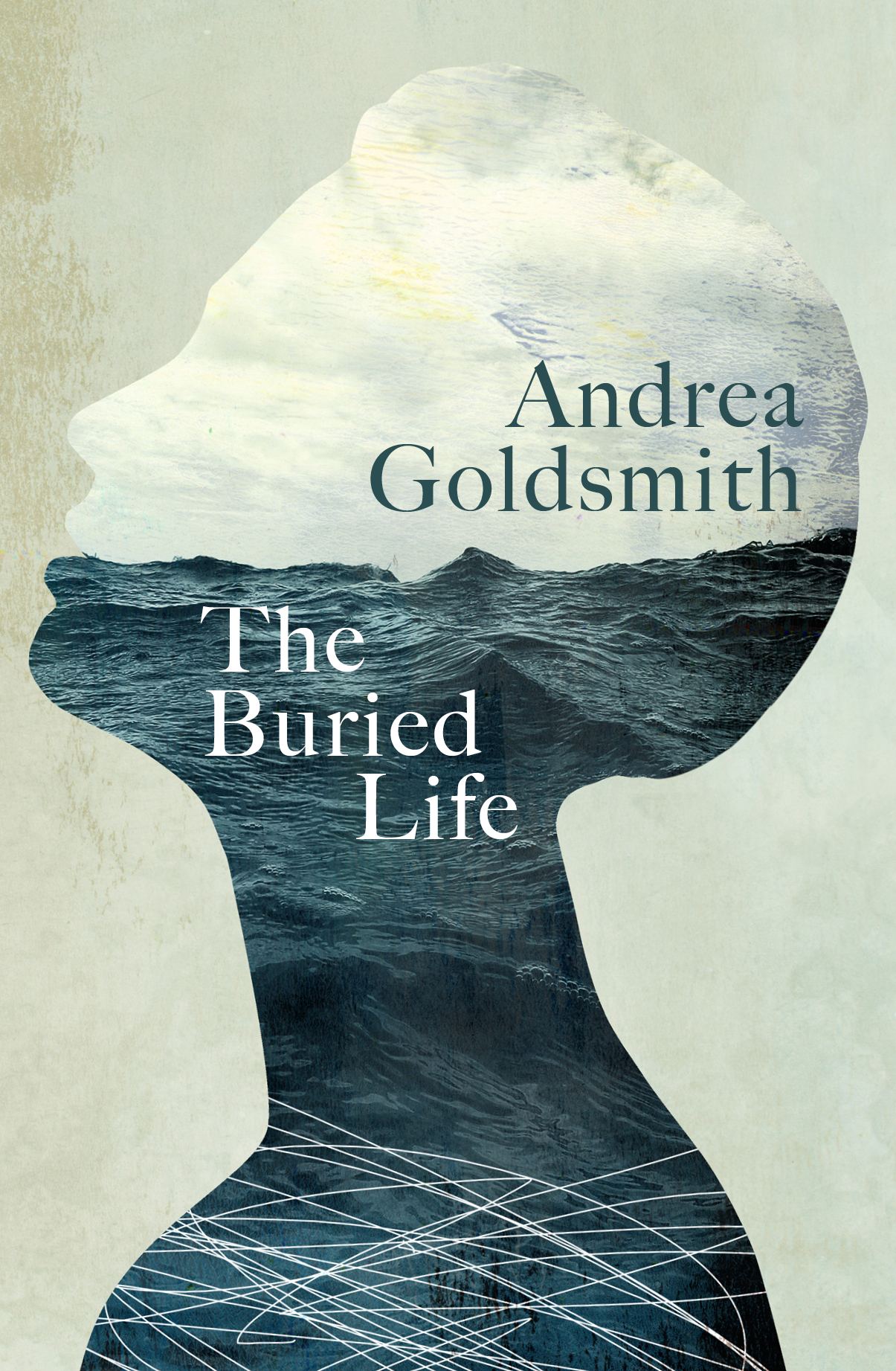 Reviewed by Magdalena Ball
Reviewed by Magdalena Ball
The Buried Life
By Andrea Goldsmith
Transit Lounge
$34.99, ISBN: 978-1-923023-25-3, Trade PB, 328pp, March 2025
Adrian Moore’s nickname is Doctor Death. He’s a professor at one of Australia’s top universities, one of the foremost experts on the subject of death. Adrian’s knowledge of death isn’t just academic. Orphaned by seven, Adrian is stoic about his early losses. Death interests him, but unlike most people, it doesn’t frighten him. What he does struggle with is life. At forty-three, his long-time partner Irene has left him and his usual routines have started to feel meaningless. He is “fast becoming a dry husk”. Fortunately, Adrian still has his neighbour and best friend Keziah Ferguson or “Kezi”, a promising young artist who has been exiled from her family and their oppressive fundamentalist church – Crossroads – after coming out. Kezi misses the Church, it’s community, its music, and her family, who refuse to accept her as she is. She is struggling against an impending ceremony honouring her parents that she is both drawn to and shut out of. Her brother is trying to convince her to attend, but only if she will pretend to be straight. Adrian and Kezi open the book, and their deep friendship becomes a constant source of warmth and generosity against a range of other dysfunctional relationships that are explored in this engaging and beautifully written book.
Throughout the novel, Goldsmith’s writing is powerful, rooting itself in the alternating points of view of three very different protagonists whose perspectives begin to overlap:
Adrian Moore gave little credence to the human capacity for change, his own abysmal state since Irene’s departure providing ample evidence. He would hear of people transformed overnight because of a dream, a film, a conversation, a book: how, like ‘a bolt of lightning’, mistakes were revealed, personal baggage discarded, problems resolved. He would listen to such stories with interest and curiosity, but always with scepticism.
Until the lightning struck him. (35)
The lightning that strikes Adrian is Mahler, initially in the form of a singer whose voice interrupts his coffeeshop reverie:
An eerie, echoey voice. Pure, distant, serene. An out-of-this-world voice. He’s never heard anything like it. He closes his eyes better to hear, rests his head in his hands. Sublime. This voice is sublime. (44)
Shocked and charmed by how this singer’s voice impacts him, Adrian begins “gorging” on Mahler, working his way through symphonies and song cycles, finding solace, beauty, and a rapture that prepares him for what is to come. Music features in many of Goldsmith’s novels and her musicianship and love of music is evident in the care taken over the descriptions, as in this one of the contralto vocal range:
There was an intimacy to it, a sort of sound-swaddling: sometimes it exerted a nostalgic pull, other times he was euphoric.
The musical passages mirror the snippets of poetry that open each chapter providing a scaffold as far-reaching as Heraclitus, Proverbs and Psalms, Nietsche, Rilke, Zbigniew Herbert, and of course Dorothy Porter, whose writing frames many of essential questions in the book:
how does the heart
that disobedient pump
make its choice?
The non-semantic sub-text provides a contrast to the linear plot, combining the mystery of music, poetry, and death as rhythmic, emotive meanings that contrast to the semantical fireworks of the book’s antagonist, Tony Sheldrake. Tony is married to Laura Benady, a beautiful social scientist working on urban development projects. When Adrian meets Laura in a cheese shop, their shared love of cheese connects them in a way that mirrors the non-linguistic and sensual power of Mahler.
Tony Sheldrrick is a particularly unpleasant character, who, incomprehensibly, Laura dotes on, allowing him to continually undermine her sense of self under the guise of encouraging her to be her “best self”:
She could feel her life dripping through her fingers. It was dreadful. She felt the pressure to argue against these thoughts, argue against herself, felt the pressure – where did it come from? – and resisted. (226)
Goldsmith writes with the perfect combination of intensity and restraint, balancing the forward motion of the novel’s rich plot, a linear arc of emotional awakening that picks up the book’s title, with philosophical reflection that leans into the poetic and unspoken qualities of music and poetry:
He was not an impetuous man, and certainly not in the emotional sphere, but he was aware of a juddering within, an emotional swill, strange and uncomfortable, but also fascinating and undeniably erotic. (84)
The Buried Life reads quickly, propelled by the way the protagonists’ lives bisect and transform through proximity. This is a beautiful and engaging story about the power of friendship, faith and art told against a backdrop of difficult and oppressive families, illness, death and unconditional love.